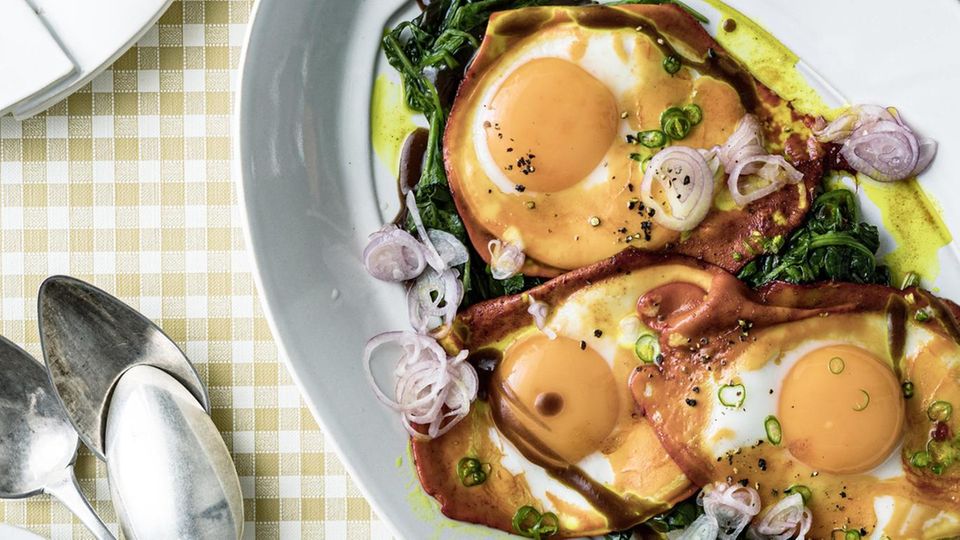Good to know
Why it’s not a fried egg – and how it’s actually called
Most of us get it wrong: the fried egg as shown in the picture is actually not a fried egg at all. Technically, a distinction is made between two terms.
You are sitting in the breakfast bar and the waitress asks you: How would you like your egg? They know right away and shout “Fried egg, of course” – and by that you probably mean the very egg you see in the picture above. However, this designation is incorrect. Technically speaking, a distinction is made between two terms: the set egg, which is cooked on one side in the pan, and the fried egg, which is cooked on all sides in the oven or in the pan by putting a lid on it. A white veil forms on the yolk.
In English-speaking countries, the set egg is also called “sunny side up”, i.e. an egg that is only fried on one side. The albumen coagulates and the yolk stays liquid. Alternatively, you can also have an egg “over easy” or “over medium” prepared, which is then fried upside down.
Set and fried eggs – the small difference
In order for the set egg to succeed, you should heat a pan that is not too large with butter or clarified butter. Then carefully break in the egg and cook it – without the lid – for two to three minutes over a low heat. Important here: salt and pepper only the white part, salting the still liquid yolk will make it tough, salting it afterwards will stain it. The egg can also be prepared in the oven, for this you crack an egg in an ovenproof dish with melted butter and let it cook in a preheated oven at 180 degrees Celsius for three to four minutes. Voilà: the real fried egg.
Fried eggs are famous around the world and are part of many dishes such as Strammer Max, Ham and Eggs and are ubiquitous at English breakfasts with baked beans, warm beans and bread.
But there are many more breakfast dishes with eggs: If you want a change from the set or fried egg, you can get inspiration from this photo series. How about frittata or shakshuka, for example?



